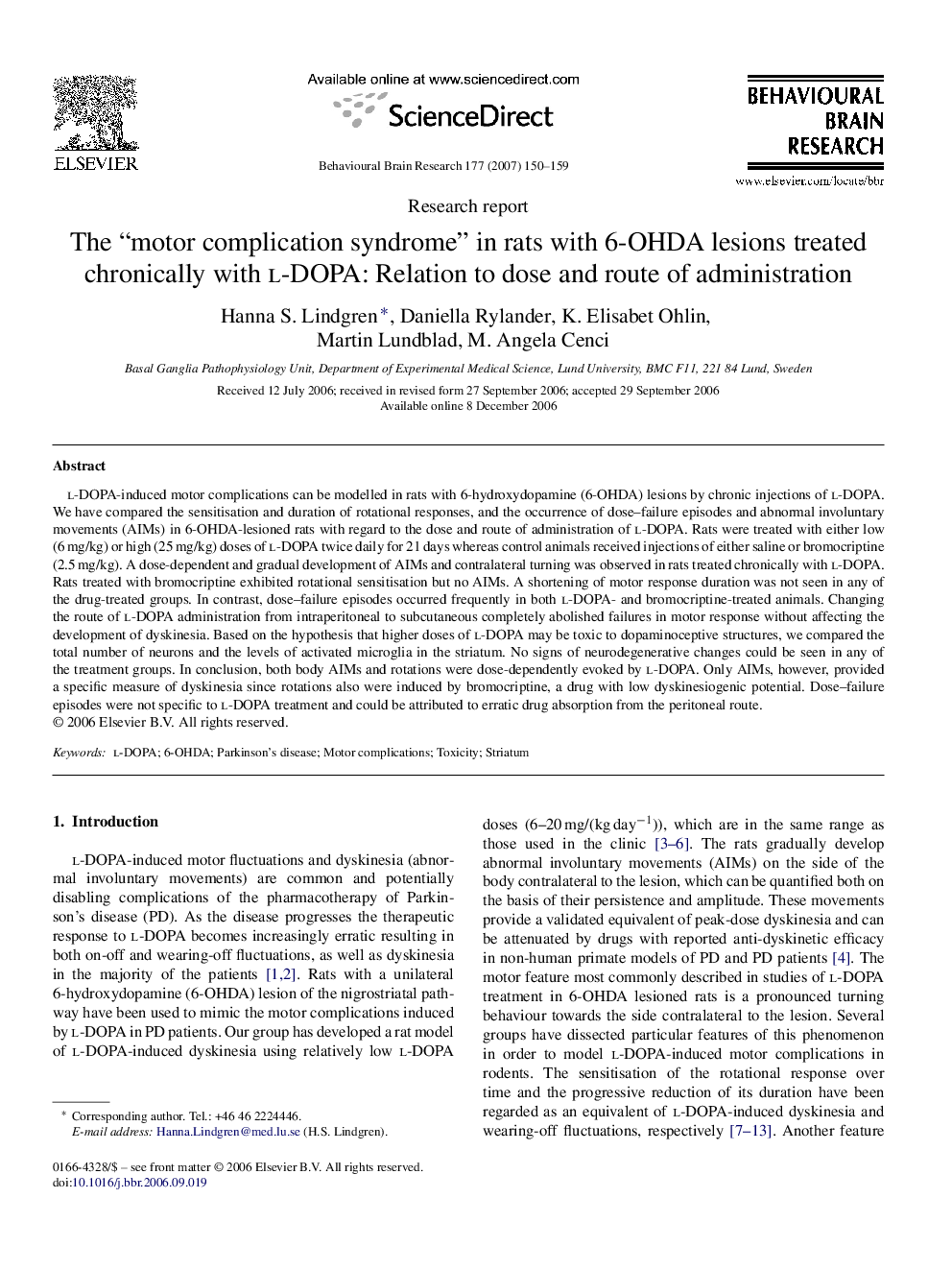| Article ID | Journal | Published Year | Pages | File Type |
|---|---|---|---|---|
| 4315729 | Behavioural Brain Research | 2007 | 10 Pages |
l-DOPA-induced motor complications can be modelled in rats with 6-hydroxydopamine (6-OHDA) lesions by chronic injections of l-DOPA. We have compared the sensitisation and duration of rotational responses, and the occurrence of dose–failure episodes and abnormal involuntary movements (AIMs) in 6-OHDA-lesioned rats with regard to the dose and route of administration of l-DOPA. Rats were treated with either low (6 mg/kg) or high (25 mg/kg) doses of l-DOPA twice daily for 21 days whereas control animals received injections of either saline or bromocriptine (2.5 mg/kg). A dose-dependent and gradual development of AIMs and contralateral turning was observed in rats treated chronically with l-DOPA. Rats treated with bromocriptine exhibited rotational sensitisation but no AIMs. A shortening of motor response duration was not seen in any of the drug-treated groups. In contrast, dose–failure episodes occurred frequently in both l-DOPA- and bromocriptine-treated animals. Changing the route of l-DOPA administration from intraperitoneal to subcutaneous completely abolished failures in motor response without affecting the development of dyskinesia. Based on the hypothesis that higher doses of l-DOPA may be toxic to dopaminoceptive structures, we compared the total number of neurons and the levels of activated microglia in the striatum. No signs of neurodegenerative changes could be seen in any of the treatment groups. In conclusion, both body AIMs and rotations were dose-dependently evoked by l-DOPA. Only AIMs, however, provided a specific measure of dyskinesia since rotations also were induced by bromocriptine, a drug with low dyskinesiogenic potential. Dose–failure episodes were not specific to l-DOPA treatment and could be attributed to erratic drug absorption from the peritoneal route.
